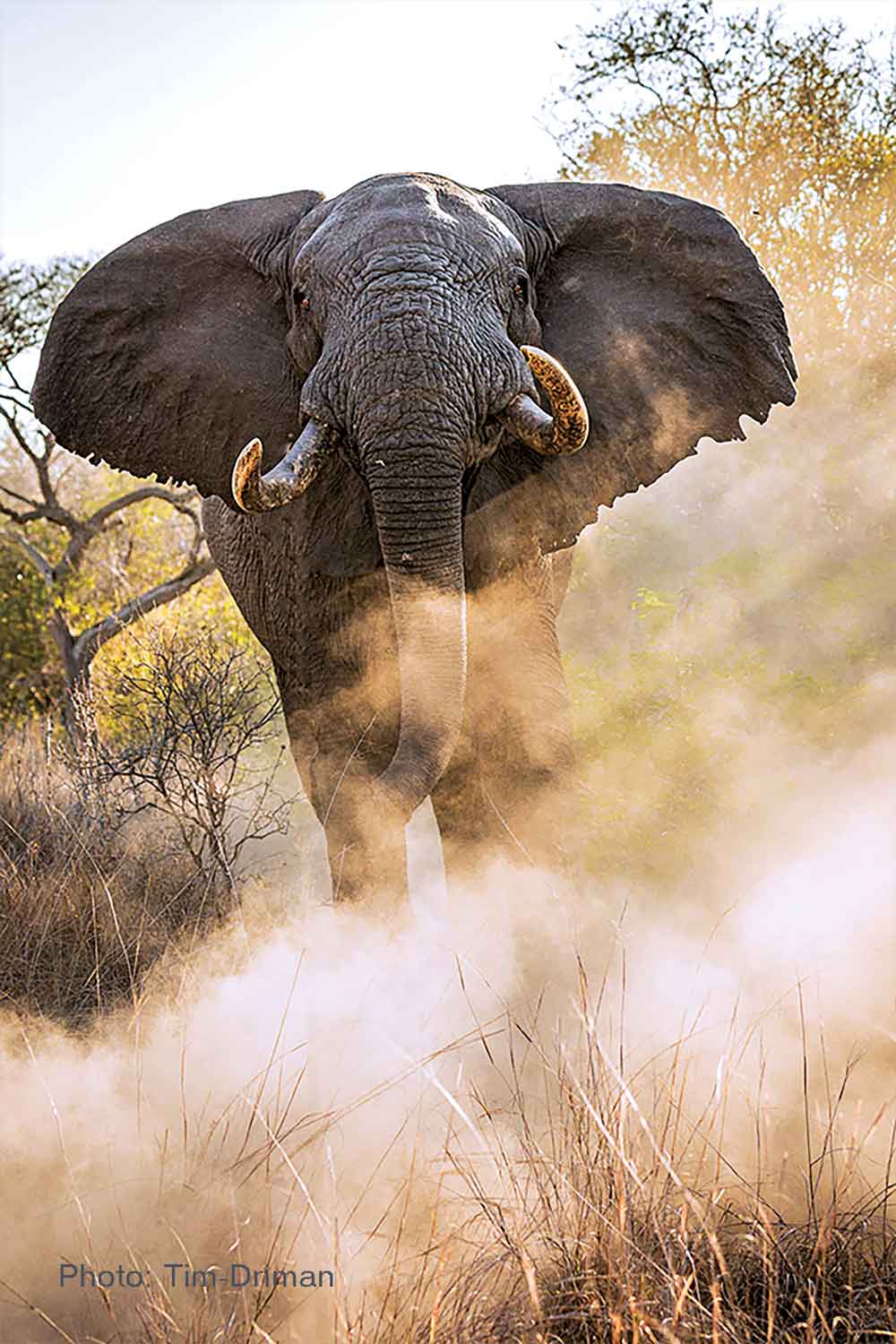Elephants are intelligent, emotional and like humans, they have a personal space that they do not like being invaded. They appreciate silence, patience and slow, consistent movements. It is important to read their body language and let common sense prevail when in their presence.
Although there are many more, we’ve highlighted seven classic elephant behaviours:

Standing Tall (threat behaviour)
Elephants normally stand or move about with eyes cast down. A direct gaze with eyes open is a component of many displays. A typical posture used mainly by females in challenging non-elephant threats, such as predators and people, would be standing or moving with the head held well above the shoulders, the chin raised ( as opposed to tucked in) and looking down at her adversary over her tusks with an eyes-open-stare and ears maximally forward. The animal appears to increase in height and sometimes deliberately stand upon and object such as a log or anthill in order to increase its height. The elephant means: I’ve got you in my sights, so watch it!